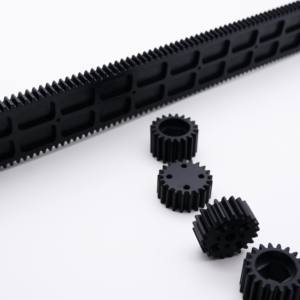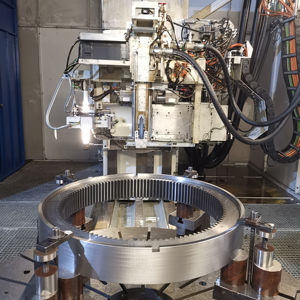PRODUCT PARAMETERS
Description
Overview of Powder Metallurgy Cylindrical Gears Pressed Powder Metal Gear Product
Gears are mechanical elements that are typically used to transmit rotational motion and force. They work by meshing teeth with each other to change speed, direction of torque, or to transfer power between multiple shafts. Gears are an integral part of mechanical engineering and are widely used in a variety of mechanical devices.
Advantages and features of Powder Metallurgy Cylindrical Gears Pressed Powder Metal Gear Product
Efficient transmission: Gears are capable of directly converting power with high efficiency and low energy loss.
Precise ratios: the desired ratio of speed and torque can be obtained by selecting gears of different sizes.
Compact: Powder Metallurgy Cylindrical Gears Pressed Powder Metal Gear Productsystems take up less space than other forms of power transmission.
High durability: well-designed gears can operate stably for long periods of time in harsh environments.
Low noise and vibration: Modern Powder Metallurgy Cylindrical Gears Pressed Powder Metal Gear Productmanufacturing technology ensures smooth operation and reduces noise and vibration.
Various types: Spur, helical, and bevel gears are available depending on the application scenario.

(Powder Metallurgy Cylindrical Gears Pressed Powder Metal Gear Product)
Specifications of Powder Metallurgy Cylindrical Gears Pressed Powder Metal Gear Product
Powder metallurgy cylindrical gears are made by pressing metal powders into shape and heating them to form solid parts. This method creates gears with high precision and consistent quality. The process starts with metal powders like iron, steel, bronze, or stainless steel. These powders are compressed in a mold under high pressure to form the gear shape. The compressed part is heated in a controlled furnace to bond the particles. This step makes the gear strong and durable.
These gears have tight tolerances and smooth surfaces. They work well in applications needing low noise and high wear resistance. Custom sizes and shapes are possible by changing the mold design. Common dimensions include outer diameters from 10 mm to 200 mm. Module ranges typically fall between 0.5 and 4. Pressure angles vary from 14.5 to 20 degrees. Tooth profiles are adjusted based on load and speed requirements.
Powder metallurgy gears cost less than machined gears. The process wastes minimal material. Complex geometries are made without extra cutting or grinding. Heat treatment options like carburizing or induction hardening improve surface hardness. This increases load capacity and extends service life. Lubrication reservoirs can be built into the gear structure. This reduces maintenance needs.
Typical applications include automotive systems, industrial machinery, and household appliances. They handle moderate to high torque levels. Maximum torque values depend on material and design. Testing under ISO or ASTM standards ensures performance reliability. Operating temperatures range from -30°C to 200°C. Higher grades withstand more extreme conditions.
Material choices balance strength, weight, and corrosion resistance. Iron-based alloys are common for general use. Stainless steel suits humid or corrosive environments. Bronze is used for self-lubricating needs. Porosity levels are controlled during production. Lower porosity improves strength. Higher porosity aids oil retention.
These gears are ready for installation after sintering. Secondary operations like machining or coating are optional. Surface treatments like zinc plating or phosphating enhance corrosion resistance. Quality checks include dimensional inspection and hardness testing. Batch consistency is maintained through strict process controls.
Powder metallurgy gears offer a reliable solution for many mechanical systems. Their production efficiency and adaptability make them suitable for high-volume orders. Performance matches or exceeds traditional gears in most cases. Customization options ensure compatibility with specific application needs.

(Powder Metallurgy Cylindrical Gears Pressed Powder Metal Gear Product)
Applications of Powder Metallurgy Cylindrical Gears Pressed Powder Metal Gear Product
Powder metallurgy cylindrical gears made from pressed powder metal offer practical solutions across various industries. These gears are common in automotive systems. They fit into transmissions, engines, and steering mechanisms. Their production method allows tight control over shape and size. This ensures consistent performance under high stress. The porous structure of pressed metal gears helps retain lubricants. This reduces friction and wear over time. Automotive manufacturers choose these gears for their balance of strength and cost efficiency. They perform well in harsh environments without degrading quickly.
Home appliances use these gears too. Washing machines, blenders, and power tools rely on their quiet operation. Powder metallurgy allows precise tooth profiles. This minimizes vibration and noise during use. The gears resist corrosion from moisture or chemicals. This makes them ideal for kitchen and laundry appliances. Their durability cuts down on maintenance needs. Users benefit from longer-lasting products with fewer replacements.
Industrial machinery depends on powder metallurgy gears for heavy-duty tasks. Conveyor systems, pumps, and agricultural equipment use them to transfer power efficiently. The gears handle high loads without warping. Their production process supports complex shapes that machining cannot easily achieve. Custom gear designs meet specific torque and speed requirements. Factories save money by reducing waste during manufacturing. Material usage is optimized, lowering overall costs.
Pressed powder metal gears suit applications needing customization. Adjustments in material composition improve hardness or heat resistance. Secondary processes like sizing or heat treatment enhance performance further. Coatings add protection against extreme temperatures or abrasive conditions. Industries like aerospace and medical devices use these tailored gears for specialized equipment.
The environmental impact of powder metallurgy is lower than traditional methods. Less material is wasted during production. Energy consumption drops because fewer machining steps are needed. Recycled metal powders can be used, supporting sustainable practices. Companies aiming to reduce their carbon footprint prefer this approach.
Powder metallurgy gears meet demands for precision, durability, and cost savings. They adapt to diverse operating conditions without failing. Their role in modern manufacturing continues to grow as industries seek efficient, reliable components.
Campony Introduction
Established in 2002, Shift Gear Machinery Co.,ltd. focus on metal research and mining machinery spare parts. 2 factories over an area of 13,300 square meters, based on 100+ sets of equipment, our production capacity reaches 12000 Tons/Year. has passed ISO 9001 quality managment system certification in 2008.
Our mainly products are dragline excavator spare parts,rotary kiln spare parts, large modulus gear (gear shaft), gearbox ect. 40+ patents with over 45 years experience to help focus on improve the service life of spare parts. We belive that more than 80% reason of mechanical parts’ working life depends on hot processing (steel making/forging/casting/welding/heat treatment). Eight material engineers will control the quality from the original resource.
If you are interested, please feel free to contact us.
Payment
L/C, T/T, Western Union, Paypal, Credit Card etc.
Shipment
By sea, by air, by express, as customers request.
5 FAQs of Powder Metallurgy Cylindrical Gears Pressed Powder Metal Gear Product
1. What is powder metallurgy in gear production?
Powder metallurgy shapes metal powders into gears. The process involves compacting metal powder in a die under high pressure. The pressed part gets heated in a controlled furnace to bond particles. This method makes precise, durable cylindrical gears with minimal material waste.
2. Why choose pressed powder metal gears over machined gears?
Pressed powder metal gears cost less. Machining removes material, wasting resources. Powder metallurgy uses near-net shaping, reducing waste. Complex shapes get made in one step. Production speed is higher. Material properties adjust by mixing powders for specific needs.
3. What industries use these gears?
Automotive systems like transmissions and pumps rely on pressed powder metal gears. Appliances, power tools, and industrial machinery use them. Applications needing high-volume, consistent parts benefit. The method suits gears requiring tight tolerances and strength.
4. Can these gears handle heavy loads?
Yes. Density and sintering conditions control strength. High-pressure compaction and sintering boost load capacity. Heat treatments like carburizing improve hardness. Proper design ensures gears meet performance standards. Testing validates durability under stress.
5. What materials are common in powder metallurgy gears?
Iron-based alloys dominate. Stainless steel, copper, and nickel blends are options. Additives like graphite enhance self-lubrication. Material choice depends on application needs. Corrosion resistance, wear resistance, and cost influence selection.

(Powder Metallurgy Cylindrical Gears Pressed Powder Metal Gear Product)
REQUEST A QUOTE
RELATED PRODUCTS
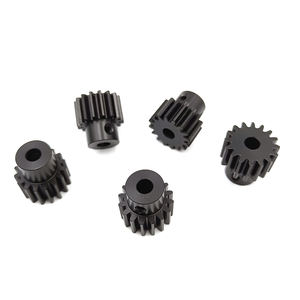
Tc432-99340 China Tractor Parts Tractor Spare Parts 6-37T Assy Gear Bevel For L4708 L5018

factory low cost large 4140 drive ring gears for mining machinery
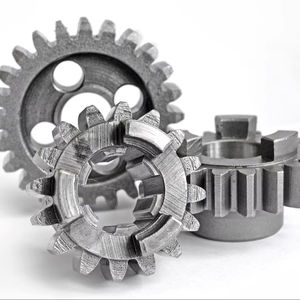
High Precision Plastic gear Factory Helical Plastic Double Helical Nylon Small Pinion gears Miniature Worm gears
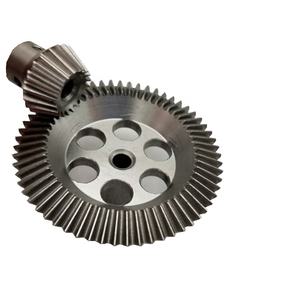
Factory Customized M0.3 to M6.0 Planetary Spur Gears High Quality
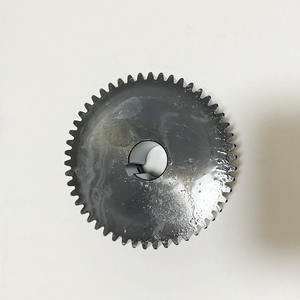
Metal Micro Crown Bevel Gear And Pinion Gears Differential Ring
